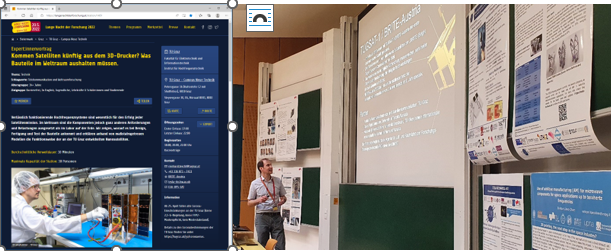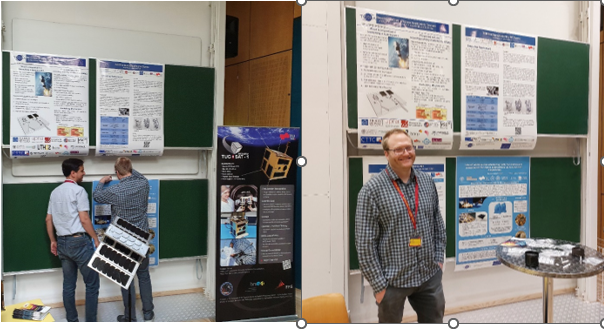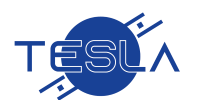Science Communication Event
On May 20, 2022, LNF22 took place throughout Austria for the 10th time. LNF stands for “Lange Nacht der Forschung” and translates to Long Night of Research. Usually including several hundred exhibition locations, LNF is regarded as the biggest event on research and science communication in the German-speaking area . Researchers from all scientific fields share their achievements with the general public.
Communication activities also have a high significance in the TESLA project, where an independent work package on outreach activities for the general public is implemented. Consequently, the TESLA consortium took part in LNF22 at the location TU Graz – Campus Neue Technik.

Screenshot of the online program depicting the joint contribution of the TESLA consortium and the Satellite Team at TU Graz (left); and Reinhard Teschl giving a short lecture on the challenges in design of RF components for space use (right).
Additive Manufacturing of Components for Space
Reliably functioning RF systems are essential for the success of every satellite mission. In space, however, the components are exposed to completely different ambient conditions than on Earth. In short lectures we explained what is important in the design, manufacturing and testing of RF components and what requirements have to be fulfilled in space. Our students engaged in dialogues with the participants, showed some of their prototypes and test samples, and presented posters from the whole TESLA consortium.

In preparation of the event, the ESRs (Early Stage Researchers) Arash Arsanjani and Luke Robins are attaching posters prepared by their colleagues from the TESLA consortium with a satellite mock-up visible in the foreground (left); and Luke Robins presenting his additively manufactured test samples (right).
TU Graz Nanosatellites
As it was thematically linked, we shared the location with the Satellite Team at TU Graz. TUGSAT-1/BRITE-Austria is the name of the first Austrian satellite in space. Since 2013, this nanosatellite has been measuring the brightness fluctuations of stars. Meanwhile another small satellite is in orbit: The OPS-SAT nanosatellite is a flying laboratory that TU Graz built for the European Space Agency (ESA) and in which space software can be tested. Detailed mock-up versions of the mentioned satellites were available to reveal the function of the individual modules and demonstrate the mode of operation.
Based on our exhibits, several in-depth discussions with the participants developed, which revealed their fascination and intellectual curiosity for space related topics.

The orbital positions of the two nanosatellites developed at TU Graz were shown in real time.
